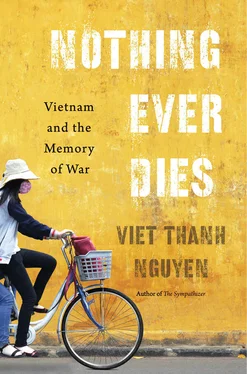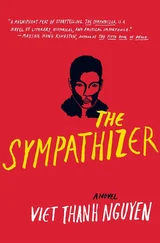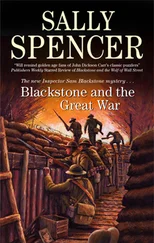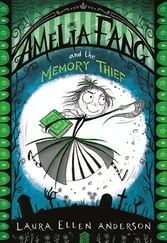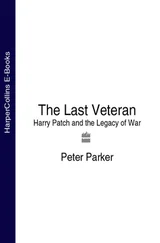To begin with content, many people in many places think of soldiers and shooting when they think of war stories, but that is too narrow a definition. “Good” war stories that pump us up, get the blood going, that tell the “truth” about war through spectacular battles and sacrificial soldiers, also affirm the necessity of war. This limited way of thinking about war stories is one of the reasons why antiwar movies are often not actually against war. They continually place at their center the soldier, and her or his validation, as hero or as antihero, persuades even some reluctant viewers to be resigned to war. They submit to the passive-aggressive demand to “support our troops” if they oppose the war, for what ingrate would not affirm these patriots? But in providing solace to the soldier, we give license to the politicians, the generals, and the weapons-makers to continue their deceptive and cynical rhetoric of supporting the troops. This rhetoric is deceptive because what it really permits is continual war-making. It is cynical because the troops often are not supported when they come home, unprotected or inadequately protected from depression, trauma, homelessness, illness, or suicide. A true war story should tell not only of the soldier but also what happened to her or him after war’s end. A true war story should also tell of the civilian, the refugee, the enemy, and, most importantly, the war machine that encompasses them all. But when war stories deal with the mundane aspects of war, some may see them as “boring” or simply not even about “war.” These conventional perceptions of war stories blind us to war’s extensive nature, for these perceptions divide the heroic soldiers who seem to be the primary agents of war from the citizens who actually make war happen and who suffer its consequences.
Exposing the war machine fundamentally challenges these identities of soldiers, citizens, and wars. This kind of war story acknowledges how war exercises the entire body politic, the squeezing of the trigger hardly possible if the rest of the body was not involved, all of its organs and parts working in conjunction with mind, memory, imagination, and fantasy. Maxine Hong Kingston renders vividly the reality that the soldier cannot fight without the support of the entire nation in her story “The Brother in Vietnam,” from her book China Men :
Whenever we ate a candy bar, when we drank grape juice, bought bread (ITT makes Wonder bread), wrapped food in plastic, made a phone call, put money in the bank, cleaned the oven, washed with soap, turned on the electricity, refrigerated food, cooked it, ran a computer, drove a car, rode an airplane, sprayed with insecticide, we were supporting the corporations that made tanks and bombers, napalm, defoliants, and bombs. For the carpet bombing. 1
From carpets to carpet bombing, war is woven into society’s fabric. It is almost impossible for a citizen not to be complicit, not to find war underfoot at home or hidden behind the curtains, as artist Martha Rosler showed in her photomontage of an American housewife pulling back the drapes to reveal the war happening right outside her window, the one that she sees and yet refuses to see while she vacuums her curtains. Thinking of war as an isolated action carried out by soldiers transforms the soldier into the face and body of war, when in truth he is only its appendage. If we do not recognize the reality of war, we are as blind to it as the housewife.
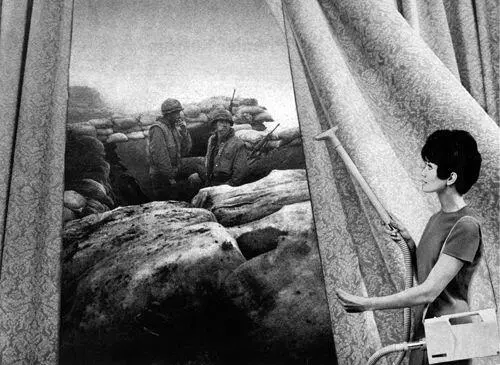
Imagining war only through the soldier’s point of view paradoxically may not lead to a true war story, despite what author Tim O’Brien argues in “How to Tell a True War Story,” a chapter from The Things They Carried , one of the war’s literary classics. The narrator of this book of fiction, also called Tim O’Brien, outlines the features of the true war story:
War is hell, but that’s not the half of it, because war is mystery and terror and adventure and courage and discovery and holiness and pity and despair and longing and love. War is nasty; war is fun. War is thrilling; war is drudgery. War makes you a man; war makes you dead. The truths are contradictory. 2
O’Brien does not mention that war is profitable, even if it is also costly. This is one of the truest things that a war story can tell, since profit is one of the most important reasons humanity keeps fighting inhuman wars. To understand this aspect of war, one must look at it from the highest vantage point possible, as the superpowers well understand with their desire to conquer air and space. One must see with satellite vision that can show the operation of massive war machines, not just the limited vision of a grunt for whom the tank may be the biggest war machine. That grunt can tell a good story, and it may be a true war story, but it is a story that could be limited. He or she might see as far as the horizon, but war machines can see beyond the horizon, and so must anyone who wants to tell a true war story. Ethics is optics, Levinas says, but war is optics, too, as Virilio argued. Telling a true war story requires the right kind of panoramic optics, an ethical one and an aesthetic one that allows us to see everyone and everything involved in war.
While much of what O’Brien describes is also true for some civilian experiences of war, we generally do not associate civilians with war stories. There is not much fun or thrill in being a civilian involuntarily caught in war (although if one is a civilian who volunteers for war, as diplomat, journalist, contractor, aid worker, and so on, then that is a different story that can be akin to the soldier’s war story). For many spectators and readers, war stories must at least be fun and thrilling, even as they try to communicate the obligatory sentiment that war is hell. These good war stories lead boys and girls to dream of being soldiers, but no one dreams of war’s costs, or of being a civilian caught in a war, an orphan, a widow, or a refugee. Children playing soldier may fantasize about glorious death, but probably not dismemberment, amputation, shellshock, inexplicable and debilitating illness, homelessness, psychosis, or suicide, all of which are not unusual experiences for soldiers and veterans. And does anyone fantasize about being raped by marauding soldiers, which is an inevitable consequence of war? If war makes you a man, does rape make you a woman?
Rape is another horizon of war memory for many, even if it is one of the truest war stories ever. The first time one human tribe inflicted murder on another human tribe, rape very likely accompanied it. Rape is an inevitable expression of the collective masculine desire that drives men to war, for while not all soldiers are rapists every army rapes. Despite the endemic nature of rape in war, few would enshrine rape in those many sterile memorials dedicated to victorious war. There is no honor to being a rapist and there is neither glory nor fun to being raped, and so memorials to rape victims are rare. (Nanjing’s memorial to the rape of the city and its women by the Japanese army in World War II stands out as an exceptional example.) Nations are more likely to acknowledge the murders their soldiers commit than the rapes soldiers have done. Rape is embarrassing, the most extreme revelation of war as an erotic experience, a turn on, a way of getting off, nasty and fun. Rape is one of war’s most unspeakable consequences, denied in the heartwarming images of soldiers being sent to war or greeted on their return by faithful wives and adorable children.
As the scholar Judith Herman notes, rape and sexual trauma are as damaging to its victims as the experiences of combat, but while soldiers are at least honored for their sacrifice, no such succor is granted to the women these husbands, brothers, and sons raped. The experiences of men raped by men are even more invisible and inaudible, anomalous to the entire notion of war as a rite of heterosexual passage. Rape destroys any lingering ideas of heroism, masculinity, and patriotism, those oily notions that keep the gears of the war machine running smoothly. Phung Thi Le Ly narrates this true war story from the perspective of a girl recruited at a young age to work for the Viet Cong, unjustly convicted of betraying them, and then raped by two of them as punishment. “The war — these men — had finally ground me down to oneness with the soil, from which I could no longer be distinguished.” 3At this point, she had already been imprisoned and tortured by her rapists’ enemies, the South Vietnamese and Americans. Caught in between these opposing forces, she realizes that soldiers and men of all sides “had finally found the perfect enemy: a terrified peasant girl who would endlessly and stupidly consent to be their victim as all Vietnam’s peasants had consented to be victims, from creation to the end of time!” 4To make sense of what happens to her, she cowrites her memoir under the name Le Ly Hayslip. Her kind of true war story, focused on women, children, peasants, and victims, as well as the unraveling trauma of rape, is the exceptional true war story that forces readers to contemplate the scenario of being raped and living to tell about it.
Читать дальше
